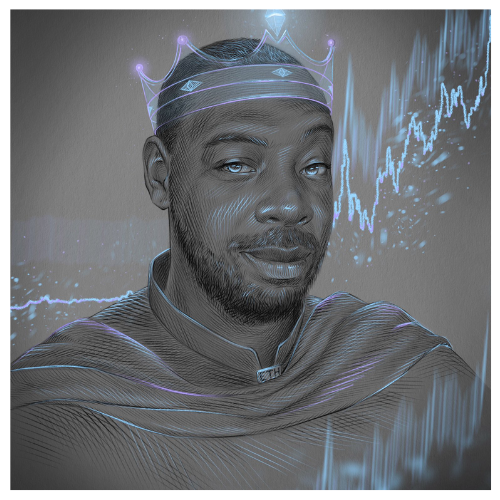Art vs. Anarchy: Haitian Warriors Save a Nation’s Soul
Art vs. Anarchy: Haitian Warriors Save a Nation’s Soul
Greetings Warriors
In the middle of burning buildings, fractured streets, and the grip of relentless gang violence, something extraordinary happened. In the heart of Port-au-Prince, under a rain of bullets and the weight of fear, Haitian police and museum workers did what few expected—they rescued a nation’s heritage. They saved art. They saved history. They saved Haiti’s soul.
This is a story of cultural resilience. Of warriors without capes. And of art refusing to die.
The Battle Begins: Gangs Threaten Haiti’s Artistic Heart
The Centre d’Art, founded in 1944, isn’t just a museum. It’s the beating heart of Haitian creativity—a space that nurtured generations of artists and gave the world masterpieces from the likes of Hector Hyppolite, Philomé Obin, Georges Liautaud, and countless others.
But in March, that sacred space came under threat.
Gangs—brazen and emboldened—moved into the neighborhood. They stole the center’s solar panels, generators, batteries, and surrounded the facility like vultures circling history. When they torched the Hôtel Oloffson, a Gothic-gingerbread landmark once graced by Hemingway and Jagger, everyone knew what was coming next.
The Centre d’Art was in their crosshairs.
Get two custom AI Art created by yours "King Romulus" truly every month. Uniquely crafted, with expressive quotes that dive deep into my subconsciousness. One of the art pieces will be posted on my Instagram account as well. Live through art history in the making!
Art Under Fire: The Two-Day Rescue Mission
That’s when the real warriors stepped in.
In a coordinated two-day operation, over 60 Haitian police officers and museum staffers launched a daring rescue mission. Armed with bravery and armored vehicles, they pushed into barricaded gang territory—facing gunfire, risking their lives—not for treasure or politics, but for paintings and sculptures.
Yes, you read that right.
They retrieved over 6,000 works of art and 3,600 historical documents, pieces that embody Haiti’s vibrant, painful, and powerful story. Every canvas saved was a defiant slap to those who tried to erase the country’s soul.
“These works are of inestimable value,” said Allenby Augustin, the Centre’s director. “They are irreplaceable. They are our identity.”
Hector Hyppolite - Woodcutters, 1947
A Legacy Worth Bleeding For
The Centre d’Art is more than its walls. Founded by Haitian intellectuals and American watercolorist DeWitt Peters, it trained artists, hosted exhibitions, and connected creators to collectors around the globe. From Jacqueline Kennedy Onassis to Jonathan Demme, collectors have long recognized the magic of Haitian art.
It’s a blend of African roots, European technique, Caribbean spirituality, and raw emotion.
Even after the 2010 earthquake reduced the building to rubble, the art was saved, tucked into containers like sacred scrolls. But the gangs? They wanted more than power—they wanted symbolism. They vandalized the center, smashed windows, stole sinks, tore ventilation systems apart, and blasted through walls to control the territory.
But they didn’t break the spirit.
The Cultural Warrior’s Code
As gunfire echoed through the neighborhood, police officers described how gang members tried to open the containers where the artwork was stored. They shot from neighboring houses—waiting, watching, resisting.
One officer shared:
“I didn’t even understand what the paintings meant. But it’s art. It’s not meant to be understood by everyone. It’s meant to be protected.”
He had lost his own home. His cars. His peace. But not his duty.
Because this was bigger than war—it was about memory.
Shameless plug 🤣 My own AI art for sale$$$
The Ghost of the Oloffson: A Wake-Up Call
The flames that consumed the legendary Hôtel Oloffson on July 5th weren’t just fire—they were prophecy. That mansion, built in the 1800s, wasn’t just a hotel—it was a symbol of Haiti’s elegance, legacy, and cultural depth.
It had hosted everyone from Elizabeth Taylor to Marlon Brando and had inspired Graham Greene’s novel The Comedians.
Its destruction sent a message: if the past can burn, the future isn’t safe either.
Nesmy Manigat, a former education minister, summed it up:
“We must not create a dangerous precedent where cultural heritage loses its value in the eyes of the youth.”
The Oloffson was a warning. The Centre d’Art was the response.
Culture Is Our Last Rampart
When bullets fly and systems collapse, culture becomes the last wall of resistance. It’s the thread that holds identity together when everything else unravels. Former Prime Minister Michèle Duvivier Pierre-Louis, who leads the Centre’s board, says it best:
“Our philosophy is to never lose hope. We have been through political, social, and natural disasters. But we resist. We look ahead.”
And in that resistance, Haitian culture roars louder than any AK-47.
Vosoughi, Be Quiet! - 2025
Haiti Is Still Here—and Still Sacred
We live in a world where art is still worth bleeding for.
In Haiti, the police didn’t just defend a museum—they defended a message: our culture is sacred. In the face of fire and death, they declared to the world that Haitian art, Haitian memory, and Haitian identity will not be erased.
Let the gangs burn buildings. Let the cowards hide behind violence.
But they will never destroy the spirit of a people who create, resist, and rise—again and again.
This is Haiti. This is power. This is legacy.












